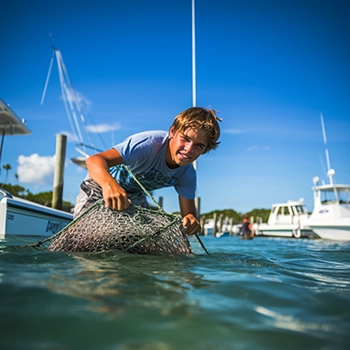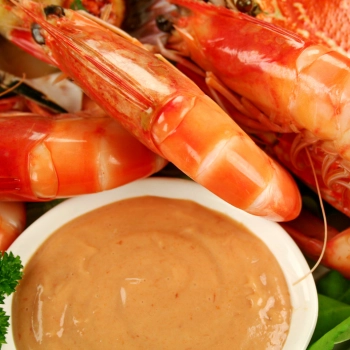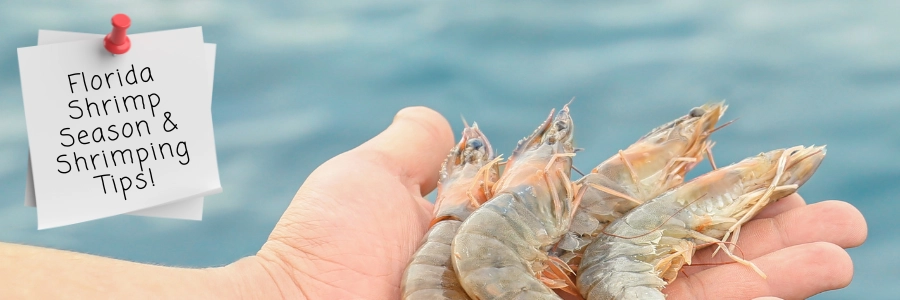
Florida Shrimp Season and Shrimping Tips
Florida is renowned for its fresh seafood, and shrimp is undoubtedly a star of the show. Have you ever wondered when Florida Shrimp Season is so you could try your luck at shrimping? Our pristine coastal waters offer an abundance of delicious shrimp and plenty of opportunity throughout the year to catch some for yourself.
To make the most of your shrimping adventure, understanding the Florida shrimp season, regulations, and techniques is essential.

Florida Shrimp Season and Shrimping Regulations
The Florida shrimp season varies by region. It’s crucial to check the most recent regulations as they can change. Typically, there’s a summer season and a winter season.
- Summer season: Often starts in late June and runs through September, targeting white shrimp.
- Winter season: Generally begins in October and extends into the spring, focusing on brown shrimp.
To ensure legal and sustainable shrimping, always obtain the necessary licenses and permits. Familiarize yourself with size limits, bag limits, and other restrictions.
Remember… you DO need a fishing license in most all cases of catching anything from Florida waters INCLUDING shrimp. Visit the Florida Wildlife Conservation official website here for most up-to-date and specific shrimping information here.
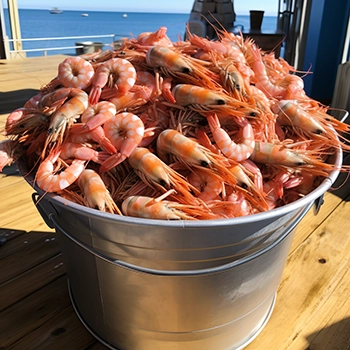

Types of Florida Shrimp and Peak Seasons
There are three types of shrimp that can be caught in Florida waters: pink, white, and brown shrimp, each with its own peak season.
Pink Shrimp (Farantapaeus duorarum):
Often referred to as “Key West Pink Shrimp”, this species is found mostly in southern waters, especially around the Florida Keys and Tortugas.
They are a smaller species than the white and brown shrimp also found in Florida waters, but excellent flavor and tender texture.
They can be caught year-round but they are most abundant from late fall (usually November) to early spring. However, the best larger sized pink shrimp are caught from December to February when the water temperature drops a bit.
White Shrimp (Penaeus setiferus):
These are typically found in the northeastern and northwestern parts of Florida. The peak season for white shrimp runs from late spring to early fall. These shrimp, often called “Gulf White Shrimp” are typically larger and have a slightly milder taste compared to brown shrimp.
Brown Shrimp (Farfantepenaeus aztecus):
Often referred to as “Gulf Brown Shrimp” this species of shrimp can be caught year-round, but are most abundant from May to August, with peak months June and July.
This species is typically caught offshore in Northwest and Northeast Florida waters where the water is deeper and murkier, versus pink and white shrimp.
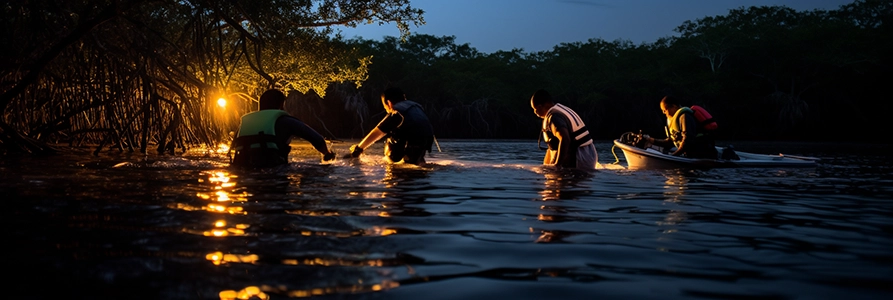
Top Shrimping Hotspots in Florida
Florida offers excellent shrimping opportunities. Here are ten prime locations:
East Coast
- Mosquito Lagoon: Known for its shallow waters and abundant shrimp.
- Indian River Lagoon: A vast estuary with various shrimp habitats.
- Biscayne Bay: Offers both inshore and offshore shrimping options.
West Coast
- Cedar Key: Picturesque area with a network of islands and creeks teeming with shrimp.
- Steinhatchee: Renowned for its pristine waters and abundant shrimp population.
- Charlotte Harbor: A large estuary with expansive seagrass beds and shrimp-rich areas.
- Apalachicola Bay: Famous for its diverse marine life, including shrimp.
Other Notable Locations
- Everglades National Park: Unique ecosystem with diverse shrimp habitats.
- Tampa Bay: Offers a mix of shallow flats and deeper channels for shrimping.
- Pensacola Bay: Known for its white shrimp and offers various shrimping opportunities.
Note: Always check with FWC for shrimping regulations plus locally regarding regulations, and always obtain necessary permits before heading out.
If you plan to go shrimping on Florida’s west coast, make sure to check the FWC website for particular restrictions as certain counties close shrimping during April and May of each year.
As an Amazon Associate I may earn from qualifying purchases at no additional cost to you.
How to Catch Shrimp
Shrimping is a different experience than fishing, and lots of people prefer it! It can take lots of patience like fishing, but when you see a stream of shrimp in a fast running flow of water it’s lots of fun to catch them!
Consider shrimping in Florida at night in shallow water during peak season, using a headlamp and a net. You can stand on a dock, or in the water and do quite well! But makes sure you’re familiar with FWC shrimping regulations, found here. Your headlamp will reflect red in the shrimp eyes, making them easy to spot in the water and scoop up.
Shrimp nets are ideal for beginners offering a simple (and fun!) way to catch shrimp. Find a current of traveling shrimp (they’ll be close to the surface) and use a net to scoop some up!
Shrimp traps are a way to catch a larger amount of shrimp in potentially deeper waters, and to catch them passively (without active work). Traps are typically baited to attract shrimp. There are some regulations so make sure to check the FWC shrimping page.
Headlamps and flashlights are great ways to see shrimp at night, as light reflects off the shrimp’s eyes and makes them easy to spot. Shrimp during the day can be more difficult to spot, especially in bright sunlight.
Factors to Consider When Shrimping in Florida
- Water temperature: Shrimp thrive in specific temperature ranges.
- Moon phases: Full moons often correlate with increased shrimp activity.
- Tidal patterns: Outgoing tides can be particularly productive.
- Weather conditions: Calm, clear nights are generally best for shrimping.
Shrimp Deveining
Deveining shrimp is an important step in preparing them for cook and eat. The “vein” is the dark string that stretches from the shrimp head to tail. It’s actually the digestive tract of the shrimp, and you want to remove it before eating if you can.
Why devein shrimp? The vein can contain sand, grit, and remnants of the shrimp’s last meal.
While the shrimp veins aren’t harmful to eat, they can affect the shrimp’s taste and texture, often imparting a gritty or slightly bitter flavor.
Deveining improves the shrimp’s appearance and ensures a cleaner, more enjoyable eating experience. It can be done carefully with a knife, or more easily and precisely with a small deveiner tool.
What Does Shrimp Taste Like?
Shrimp has a delicate, sweet flavor with a slightly briny undertone. The taste can vary depending on the type of shrimp and how it is prepared. The texture is tender and juicy.
Delicious Ways to Prepare and Eat Shrimp
Shrimp is incredibly versatile and can be enjoyed in countless ways. Here are a few ideas:
- Grilled Shrimp: A classic and flavorful option. Marinate shrimp in a mixture of lemon juice, garlic, olive oil, and your favorite herbs. Grill until pink and cooked through.
- Shrimp Scampi: A buttery and garlicky dish that is quick and easy to prepare.
- Shrimp Cocktail: A refreshing appetizer perfect for any occasion.
Super Easy Shrimp Dipping Sauce Recipe
- Combine mayonnaise, ketchup, horseradish, and lemon juice in a bowl.
- Adjust the proportions to taste.

